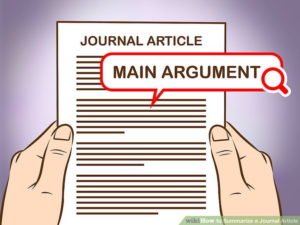Where to Buy Essays Online
| Rank | Website | Students’ Rating | Info | |
|---|---|---|---|---|
 |
GlobalEssayWriters.com WE WRITE ESSAYS FOR STUDENTS Tell us about your assignment and we will find the best writer for your paper. Write My Essay For Me |
Quality:10
Price:9.9
Delivery:10
|
||
 |
NursingEssayHub.com |
Quality:9.9
Price:9.8
Delivery:10
|
||
 |
ApprovedScholars.com |
Quality:9.9
Price:9.8
Delivery:9.8
|
||
Journal Article Template
Enter Title of Your Article: And Subtitle
Your First_Name Last_Name[1] University Affiliation, Country
Abstract: Please insert the abstract here. To denote italicization in the abstract or keywords, please use double quotation marks. An example would be “The International Journal of the Book.” Please note that the abstract is a summary of this article. As a summary, it should not include any direct quotes or other material that would require the use of citations. In addition, please refrain from inserting footnotes in the abstract.
Keywords: List of Keywords in Title Case, Commas in between, Center Aligned

Section Heading
Block quotations should be indented by .5 inches, should not include quotation marks, and should end with a parenthetical citation after the period. Block quotes should be used when quoting 100 words or more. (Author Surname year published, page number when available) [2]he opening paragraph has no indentation. The first letter of the opening paragraph of the article should be in drop case. Your article’s format should follow the format of this template. To use the template, use the original Style Set that we have created for you, which you have downloaded by opening this sample template. The Style Set can be found in the upper right hand corner of the page under the tab “Home” and is listed as “Styles.” If you are using a separate Microsoft document than this one, please first save this style set to your computer by clicking on “Change Styles,” “Style Set,” and then “Save as a Quick Style Set.” Name the style set anything that you like (for example “MyArticleStyleSet”) and then you will be able to access this style set from other Microsoft documents. To access the style set that you saved, click “Change Styles,” “Style Set,” and click on the set that you just saved. To determine which style is used in each section, click on the text in that section. For example, this section is using the “*FirstParaofSectionTextStyle.” Highlight the text that you would like to be formatted, and click on the corresponding Style, and the text will be changed automatically to format according to the style that you press.
Please do not alter the margins; they are customized to fit the layout of our typesetting software and are different on odd and even pages for printing reasons. Information in the footer will be updated when the article is typeset.
The second and subsequent paragraphs in sections are indented by .25 inches. Text should be single spaced, and spaces should only exist between paragraphs when using block quotes, as seen above. The second and subsequent paragraphs follow the formatting style of “*SubsequentParagraphsTextStyle.”Highlight the text that you would like to be formatted, and click on the corresponding Style, and the text will be changed automatically to format according to the style that you press.
New Section Heading
The opening paragraph has no indentation. This indenting is completed automatically by selecting the text style labeled as “*FirstParaofSectionTextStyle.” All paragraphs in the article should consist of three sentences or more. This rule is demonstrated by the paragraph you are currently reading.
The second and subsequent paragraphs in sections are indented by .25 inches. This indenting is completed automatically when using “*SubsequentParagraphsTextStyle.”All paragraphs in the article should consist of three sentences or more. This rule is demonstrated by the paragraph you are currently reading.
Section Subheading One: “*Section Subheading1”
The second tier of Section Headings is called Section Subheading One. This heading is used for sections within the main section headings. The style for Section Subheading One can be set by selecting “*SectionSubheading1” from the list of styles. The opening paragraph has no indentation. This indenting is completed automatically by selecting the text style labeled as “*FirstParaofSectionTextStyle.” All paragraphs in the article should consist of three sentences or more. This rule is demonstrated by the paragraph you are currently reading.
The second and subsequent paragraphs in sections are indented by .25 inches. This indenting is completed automatically when using “*SubsequentParagraphsTextStyle.”All paragraphs in the article should consist of three sentences or more. This rule is demonstrated by the paragraph you are currently reading.
Section Subheading Two: “*SectionSubheading2”
The third tier of Section Headings is called Section Subheading Two. This heading is used for sections within the subheadings. The style for Section Subheading Two can be set by selecting “*SectionSubheading2” from the list of styles. The opening paragraph has no indentation. This indenting is completed automatically when using “*FirstParaofSectionTextStyle.” All paragraphs in the article should consist of three sentences or more. This rule is demonstrated by the paragraph you are currently reading.
The second and subsequent paragraphs in sections are indented by .25 inches. This indenting is completed automatically when using “*SubsequentParagraphsTextStyle.”All paragraphs in the article should consist of three sentences or more. This rule is demonstrated by the paragraph you are currently reading.
When inserting tables and figures within the body of the article, position them after the paragraph in which they are described. When citing the source information, it should be included at the bottom of the figure in a “source line.” Tables and figures should be labeled with numbers and a short, descriptive title. Table headings should be flushed left above the table, while figure captions should be flushed left below the image. Examples can be seen below in Table 1 and Figure 1.

Table 1: Title of Table
| Column Title | Column Title | Column Title | |
| Row Title | |||
| Row Title |
Source: Data Adapted from Author’s Surname year of publication
Figure 1: Sample Figure -Enter The Caption of the Figure in Title Case
Source: Enter Your Lastname Year (if you are the creator—which you should rather than copying from another source
All figures, tables, images, etc. must credit a “source” of the image/graphic. If the image/graphic was created or generated by the author(s), then please list the Surname and a year. If the image/graphic was not created by the author(s), please provide the source from which the figure was obtained, such as a scanned image from a book, an image courtesy of a museum, an image from a website, etc. Figures and Tables cannot exceed 5.4 inches in width. Figure 1 is an example of the maximum width allowed.
Another Section Heading
The opening paragraph has no indentation.[3] This indenting is completed automatically by selecting the text style labeled as “*FirstParaofSectionTextStyle.” All paragraphs in the article should consist of three sentences or more. This rule is demonstrated by the paragraph you are currently reading.
The second and subsequent paragraphs in sections are indented by .25 inches. This indenting is completed automatically when using “*SubsequentParagraphsTextStyle.”All paragraphs in the article should consist of three sentences or more. This rule is demonstrated by the paragraph you are currently reading. Please follow the same format as above for the rest of your journal article.
Acknowledgement
If including an acknowledgement, please insert it here. Please note that the headers on odd pages of the article will include the surname of only the first author and the headers on even pages will include the name of the journal.

REFERENCES
References should be listed here and must follow the Seventeenth Edition of The Chicago Manual of Style. In order to comply with The Chicago Manual of Style author-date system, we ask that references be formatted in alphabetical order.
Utilize the style labeled “* ReferencesText” to automatically format this list with a hanging indent and the appropriate spacing.
A helpful guide with detailed examples is available from the support page of the web. http://younameit.org/support/.
In-text citations are like this (Smith 2006). When citing direct quotes, reference specific pages in the text like this (Smith 2006, 99). More information on Chicago Manual of Style can be found on the web. We prefer author-date citations to footnotes or endnotes; however, if footnotes and endnotes are important to you, we do accept them.
Smith, Michael. 2006. Title of the Book. New York: Publisher.
Smith, Joshua I. 2009. “The More References the Better.” Journal of Something 104 (4): 439–58. http://doi.org./10.1086/650xx9.
ABOUT THE AUTHORS
Author Name: Position in Organization, Division in Organization, Affiliated Organization, City, State, Country
Author Name: Position in Organization, Division in Organization, Affiliated Organization, City, State, Country. For multiple authors, follow the same format. Honorifics can be included in this section. Please do not include honorifics on the first page of the journal article.
[1] Corresponding Author
[2] While we highly encourage internal author-date citations, if you are using the footnote system, please make sure to use the footnote function on Microsoft Word (found under the “References” tab) and to keep footnotes in size 8 font in Times New Roman.
[3] While we highly encourage internal author-date citations, if you are using the footnote system, please make sure to use the footnote function on Microsoft Word (found under the references section) and to keep footnotes in size 8 font in Times New Roman.
Journal Article Template
Let our team of professional writers take care of your essays for you! We provide quality and plagiarism free academic papers written from scratch. Sit back, relax, and leave the writing to us! Meet some of our best research paper writing experts. We obey strict privacy policies to secure every byte of information between you and us.
ORDER ORIGINAL ANSWERS WRITTEN FROM SCRATCH



